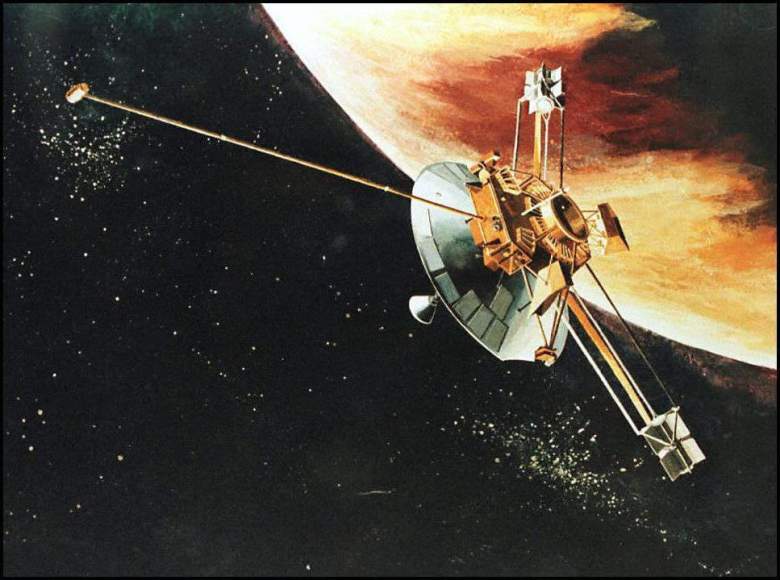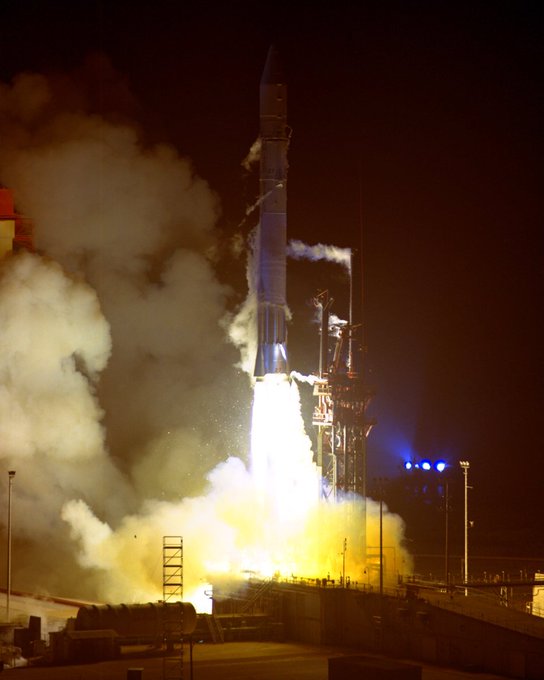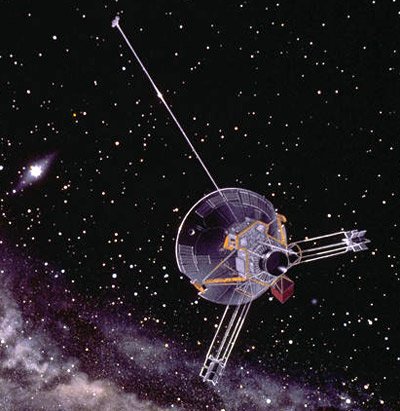
Getty This is an artist rendition of the Pioneer 10 spacecraft as it passes the planet Jupiter.
On this day in history, March 2, 1972, NASA launched Pioneer 10 for its mission to Jupiter. The mission was initially slated as a 21-month mission, and instead lasted more than 30 years.
Pioneer 10 was NASA’s first mission to the outer planets, according to NASA. Transmissions ended in 2003 as the power source for its radio decayed, but the spacecraft is still traversing space. Today, it is headed toward Aldebaran, the red star of Taurus.
“The mission was a spectacular success and the spacecraft notched a series of firsts unmatched by any other robotic spacecraft to date,” NASA wrote.
Follow the Heavy on Houston Facebook page for the latest Houston news and more.
Here’s what you need to know:
Pioneer 10 Was the First Spacecraft to Travel Through the Asteroid Belt & Obtain Up-Close Images of Jupiter
Pioneer 10 launched from Cape Canaveral, Florida on March 2, 1972, at 1:49 a.m. UT, or 7:49 p.m. in Houston, according to NASA. The 569-pound spacecraft was launched from the Atlas Centaur. Its scientific instruments included an Imaging Photopolarimeter, a Helium Vector Magnetometer (HVM), an Infrared Adiometer, a Quadrispherical Plasma Analyzer, an Ultraviolet Photometer, a Charged Particle Instrument (CPI), a Cosmic Ray Telescope (CRT), a Geiger Tube Telescope (GTT), a Sisyphus Asteroid/Meteoroid Detector (AMD), Meteoroid Detectors and Trapped Radiation Detector (TRD).
Pioneer 10 entered the asteroid belt July 15, 1972 and made its closest approach to Jupiter December 4, 1973, NASA reported. The spacecraft continued its travels beyond its original destination, crossing Saturn’s orbit in February 1976. It crossed Neptune’s orbit on June 13, 1983.
The Houston Space Center wrote about Pioneer 10 and its many firsts.
It said:
This spacecraft provided crucial information about our solar system and neighboring planets which will help with our journey into deep space. It notched a series of firsts unmatched by any other robotic spacecraft:
First spacecraft placed on a trajectory to escape the solar system into interstellar space
First spacecraft to fly beyond Mars
First spacecraft to fly through the main asteroid belt
First spacecraft to fly past Jupiter
Crossed the orbit of Neptune to become the first human-made object to go beyond Neptune
First spacecraft to use all-nuclear electrical power
Pioneer 10 Continues Its Journey Through Outer Space & Contains Diagrams of Humans In Case It Is Intercepted By Intelligent Life
Pioneer 10 made its last transmission January 23, 2003, and the mission that was planned to last for less than two years lasted nearly 31, NASA reported. The final transmission came 7.6 billion miles from Earth. It took 11 hours and 20 minutes for the signal to reach Earth. It was clear at the time that the power source had decayed, and the radio transmitter was receiving insufficient power. A final attempt to contact Pioneer 10 was made on March 4, 2006.
Today, Pioneer 10 is headed toward Aldebaran, the red star that forms the constellation Taurus. It will be 2 million years before Pioneer 10 passes the star, NASA reported.
When NASA launched Pioneer 10, scientists included messages about humans and our solar system, in case it is ever intercepted by intelligent life.
NASA wrote:
Pioneer 10 is heading out of the solar system in a direction very different from the two Voyager probes and Pioneer 11, i.e., towards the nose of the heliosphere in an upstream direction relative to the inflowing interstellar gas.
In case its intercepted by intelligent life, Pioneer 10 carries an aluminum plaque with diagrams of a man and a woman, the solar system, and its location relative to 14 pulsars. The expectation is that intelligent beings would be able to interpret the diagram to determine the position of the Sun— and thus, Earth— at the time of launch relative to the pulsars.
READ NEXT: Today in Houston History: Mars Opportunity Rover Dies Feb. 13, 2019



